Common Name(s): Teak, Burmese teak, genuine teak
Scientific Name: Tectona grandis
Distribution: Native to southern Asia; widely grown on plantations throughout tropical regions of Africa, Asia, and Latin America.
Tree Size: 100-130 ft (30-40 m) tall,
3-5 ft (1-1.5 m) trunk diameter
Average Dried Weight: 40.9 lbs/ft3 (655 kg/m3)
Specific Gravity (Basic, 12% MC): 0.55, 0.66
Janka Hardness: 1,070 lbf (4,740 N)
Modulus of Rupture: 14,080 lbf/in2 (97.1 MPa)
Elastic Modulus: 1,781,000 lbf/in2 (12.28 GPa)
Crushing Strength: 7,940 lbf/in2 (54.8 MPa)
Shrinkage: Radial: 2.6%, Tangential: 5.3%,
Volumetric: 7.2%, T/R Ratio: 2
Color/Appearance: Heartwood tends to be a golden or medium brown, with color darkening with age.
Grain/Texture: Grain is straight, though it can occasionally be wavy or interlocked. Coarse, uneven texture and moderate to low natural luster. Raw, unfinished wood surfaces have a slightly oily or greasy feel due to natural oils.
Rot Resistance: Teak has been considered by many to be the gold standard for decay resistance, and its heartwood is rated as very durable. Teak is also resistant to termites, though it is only moderately resistant to marine borers and powder post beetles.
Workability: Easy to work in nearly all regards, with the only caveat being that teak contains a high level of silica (up to 1.4%) which has a pronounced blunting effect on cutting edges. Despite its natural oils, teak usually glues and finishes well, though in some instances it may be necessary to wipe the surface of the wood with a solvent prior to gluing/finishing to reduce the natural oils on the surface of the wood.
Odor: Teak can have a leather-like scent when freshly milled.
Allergies/Toxicity: Although severe reactions are quite uncommon, teak has been reported as a sensitizer. Usually most common reactions simply include eye, skin, and respiratory irritation, as well as other health effects, such as pink eye, rash, nausea, asthma-like symptoms, and vision effects. See the articles Wood Allergies and Toxicity and Wood Dust Safety for more information.
Pricing/Availability: Despite its widespread cultivation on plantations worldwide, teak is very expensive. It is perhaps one of the most expensive lumbers on the market, at least for large-sized, non-figured wood. Other woods are more expensive, but are typically only available in small pieces, (i.e., Gaboon ebony or snakewood), or they are valued solely for the figure of their grain (i.e., burl woods, Pommele sapele, or Waterfall bubinga).
Sustainability: This wood species is not listed in the CITES Appendices or on the IUCN Red List of Threatened Species. However, because of a recent (Feb. 2021) military takeover of the country of Myanmar (the biggest source of teak worldwide), sanctions have been placed on imported teak. Since the primary company exporting teak is government-owned, sale of the wood is linked to continuing human-rights violations and oppression.
Common Uses: Ship and boatbuilding, veneer, furniture, exterior construction, carving, turnings, and other small wood objects.
Comments: Sometimes called Burmese teak, this name is used to differentiate natural-grown trees (typically from Myanmar, aka Burma) from teak grown on plantations. Used extensively in India and within its natural range for centuries, teak has grown into a worldwide favorite. With its superb stability, good strength properties, easy workability—and most of all, its outstanding resistance to decay and rot—it’s no wonder that teak ranks among the most desired lumbers in the world.
Much like the many names and knockoffs of mahogany, the moniker “teak” has been affixed and assigned to a number of different woods seeking acclaim. The usual procedure is to take a wood bearing any degree of resemblance to teak and insert a geographical location in front of the name. For instance, cumaru is sometimes referred to as Brazilian teak, while Rhodesian teak bears little botanical relation to real teak—Tectona grandis. The name Burmese teak, however, does refer unambiguously to genuine Teak.
Images: Drag the slider up/down to toggle between raw and finished wood.
A special thanks to Steve Earis for providing the photo of the finished bowl of this wood species.
Identification: See the article on Hardwood Anatomy for definitions of endgrain features.
Porosity: ring porous or semi-ring-porous
Arrangement: single row of earlywood pores
Vessels: large to very large in earlywood, medium to large in latewood, few; tyloses and whitish heartwood deposits (silica) common
Parenchyma: vasicentric, and banded (very wide marginal band sometimes large enough to enclose entire earlywood pores)
Rays: medium width (visible without lens); normal spacing
Lookalikes/Substitutes: Two hardwoods from Africa, iroko (Milicia excelsa) and afrormosia (Pericopsis elata) are both used as substitutes and are sometimes called African teak (though they are botanically unrelated). Although they both bear a superficial appearance similar to teak, both can be fairly easily separated from Tectona on the basis of endgrain anatomy. The two African species are strictly diffuse porous, as well as having much more extensive aliform and confluent parenchyma surrounding their pores.
Notes: The growth pattern tends to be more semi-ring-porous on wood from faster-grown plantation trees, while the slower-growing wild trees tend to produce more distinctly ring-porous wood.
The Tectona genus contains only three species, of which T. grandis greatly overshadows the other two species. The two remaining species, T. hamiltoniana (endemic to Burma) and T. philippinensis (endemic to the Philippines) are both endangered and not commonly encountered.
Related Content:

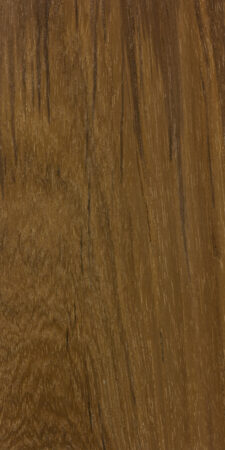
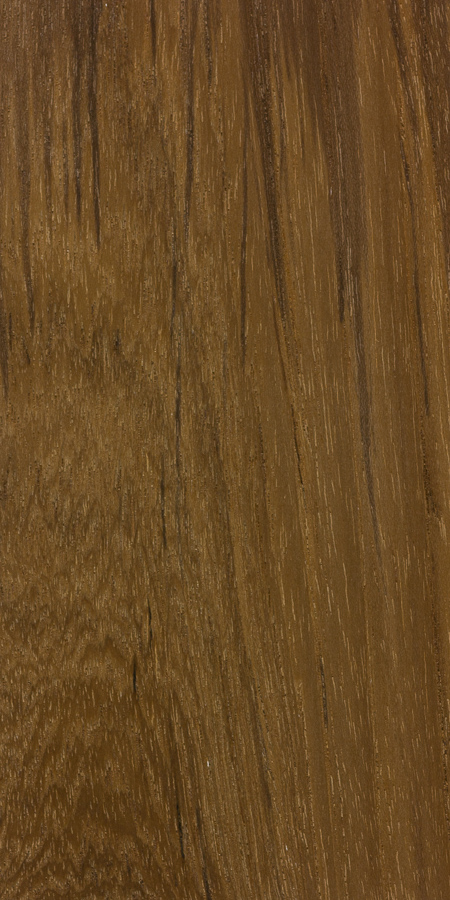
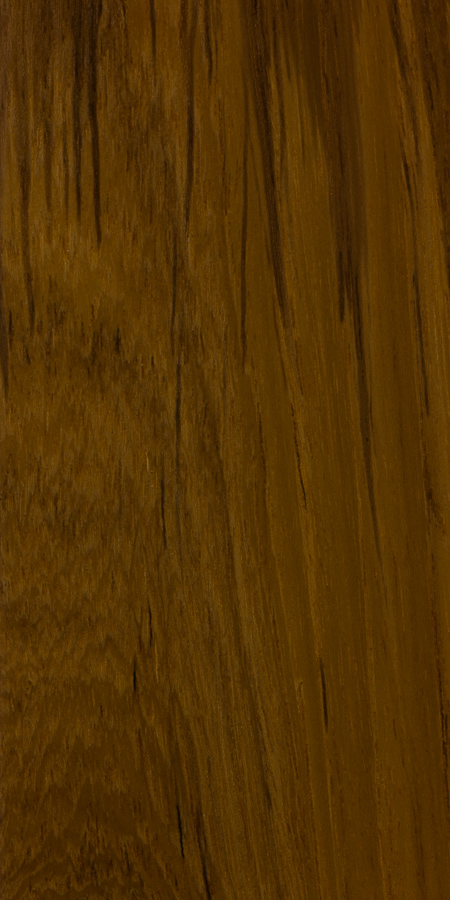
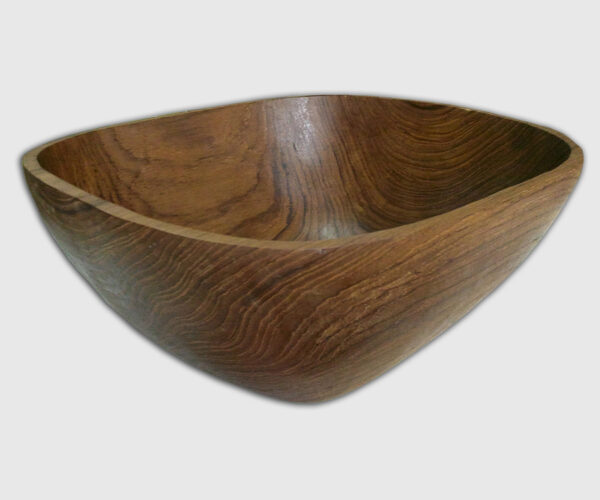
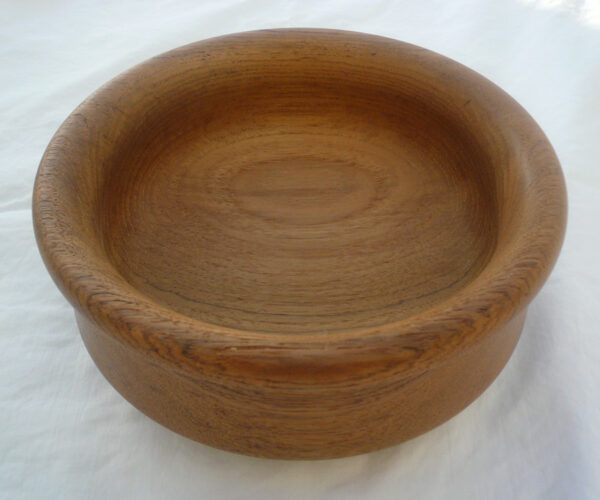
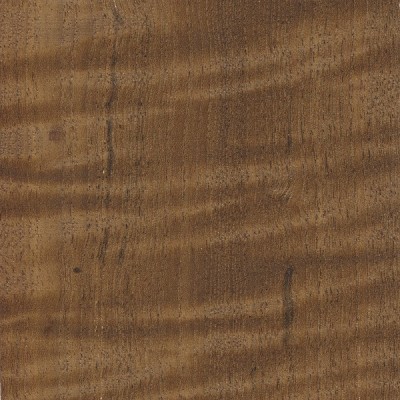
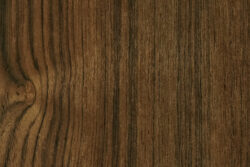
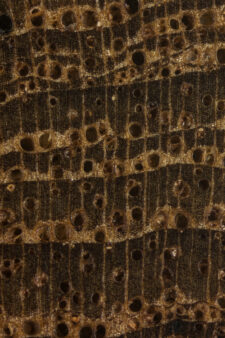

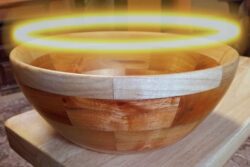

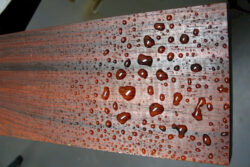
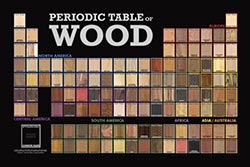





The top of Carlos Santana’s Yamaha SG that he used from 1976-1982 was teak. As far as I know, that is the only guitar that involves teak wood.
Scraper hand plane: Teak body and wedge with bamboo sole.
I’m not sure if this is teakwood. Please advise.
Good day, I am have old doors (100years or older), that I made in to tables – who in South Africa can help me identify the wood?
A turned bowl from Teak wood
One anecdotal story about teak while making this website. Out of the roughly 1300+ initial wood samples that I photographed for this site, teak was the only wood that seemed to have some sort of reaction to the naphtha that I used to wet the wood to photograph the “finished” appearance of the wood. It looked like some of the heartwood extractives were visibly leaching out into the naphtha. I think I had to switch to denatured alcohol for this one species to avoid the discoloration. All this to say, whatever chemical compounds are in teak, they seem to be… Read more »
Hi dear:
Could it be possible make skateboard decks with teak? Originally these are made with hard rock maple. Wich would be the differences or properties??
I Think yes. you can make skaateboard decks with teakwood veeners. it will be a strong and sturdy build. as long as you use only the brown side, and the best teakwood that taken cared by the goverment (especilly in Indonesia). i hope it’ll help.
Dear wood lovers.
I just bought my self an outdoor teak bench and two chairs.
Can anyone help me answer this? Searching the internet I saw it isn’t needed to treat the wood with oils. That sounds good to me cause it will safe money and effort. I don’t mind if the wood goes grey.
But what if I want to make sure that I can keep this furniture for many years? Should I treat it with some oil?
Thank you
Not required, as Teak itself has plenty of oils gets secreted from it within..
If you don’t mind the grey you have nothing to do. I live on an 83 year old teak ketch.
Has anyone ever had an allergic reaction to touching teak? We got new patio furniture and my husband has broken out in hives or rashes and gotten a bit puffy in places. We can’t think of what else is new in our lives. We haven’t sanded. Just assembled and rubbed on a teak protectant. Any stories?
I get bad rashes, in my wrists, when worked with Burmese teak.
So I need to use gloves while working this timber.
I find teak wonderful to work with, don’t let the oils intimidate you, the price is intimidating enough. I just use a little alcohol or mineral spirits before gluing if it feels really oily.
It’s a joy to work with, but I’m also a leather worker and don’t think it smells like leather, maybe leather soaked in urine. I use Odies oil on everything, but it makes teak even more durable than it already is and keeps that nice gold/carmel color.
What is the load bearing capacity of teak?
This website is a treasure trove! Thank you for all the info! Is teak a good choice for using as staircase steps? Will application of oils for finishing and/or maintenance make the steps slippery?
leave it for sometime till it gets dry
what solvents can be used to remove surface oils/residue from unfinished teak surfaces that have darkened with age? Not interested in bleaching the wood, just removing surface coloring on aged wood.
Can teak be safely used to store liquid food items?
Would there be a transfer of aroma? of oily content?
Initially the liquids will smell very ‘teaky’. However with repeated use the smell disappears.
what are the test should be proven before buy the teak logs recently felled , regarding density and hardness , humidity, dryness colors and dimennsion should be reviewed
Are you asking in order to tell if it is genuine teak versus some other wood, or are you asking if the teak that you know is genuine has been processed and dried properly?
i think he’s asking the latter.
I am making a end grain table from small teak blocks and would like to know the best way to fill the pores of the end grain. im from RSA so doent have all these grain fillers like you and filling it with glue and saw dust usually just makes the varnish look uneven after sanded and applying.. thanks
Neil, I’d try using a sealing finish like linseed oil and very lightly sand it out before the piece is fully dry. Works as it’s own pore filler, better than any other product I’ve tried. Works great on teak and other open grain woods like walnut or oak. It worked perfectly in matching the finish of in couple of restorations of antiques. When you have to refinish an entire piano, you find what works in a hurry!
Does teak grow in Hawaii?
No. It grows in southern Asia and Southamerican countries.
No it does not grow native in South America. There are a lot of woods that are called teak but teak is really from asia.
There are teak plantations all through southern Mexico, Central America, and Northern South America. I live in Mexico and plantation teak is readily available here at a reasonable price.
It does not grow ingenuously in Hawaii, but considering the volcanic soil, i bet it may do well. The teak growing in Central and South American countries is all plantation grown.
If you just want to grow yourself a tree, it is extremely slow growing. You may not live to see it mature. Also, it would be a crime to create a teak plantation anywhere in the Hawaiian islands. It is a non-native species there, and Hawaii has really been exploited enough. It shouldn’t even be considered.
There are definitely teak plantations in Hawaii
The mormon religion owns teak plantations in hawaii
Sailboat person: If the dimensions of the teak compression post are the same or better than the mast, it will be plenty strong however, the post mounts on the mast step in the bilge and therefore the structure of the mast step must be very strong, otherwise the mast will press down on the post and the post will press down on the mast step and put a huge strain on the structure in the bilge.
Teak is pretty strong. It would make a good compression post except for the expense. Douglas Fir is about the same strength (elasticity and hardness) but far cheaper, plus, yhou can glue up a 4X6 out of smaller timber with DF as it take glue really well. I would not trust a teak glue-up.
WHAT IS THE DIMENSIONS OF WOOD SPECIMEN FOR WHICH U CONDUCTED THE MECHANICAL PROPERTIES TESTS?
hello,
what is the difference between burma teak,chittagong teak and teak chamble wood?
Anyone who can help ….
Can teak post be used as a mast support inside a cabin of a sailing boat ??? Is it strong enough ????
I was thinking if it is not strong enough – I can wrap it in carbon fibre…..
Thanks for your time….
Wrapping it in carbon fiber won’t work. Teak is strong and hard enough to use for your purpose.
Agreed. But use a single piece of teak, do not make a glue up/laminate of thinner pieces.
Also, why not use Douglass Fir? It is as strong as teak and far cheaper. If you are worried about rot, place a block of teak or even G10 under the base, and another piece of G10 between the upper end and the cabin top. G10 is impervious to moisture and if you do this, you can easily keep the dough fir dry and also keep an eye on it. You’ll save hundreds of dollars doing it this way.
Is these termite proof?
Yes
Yes it is.
resistant, not proof
Can I “seal” my Burmese Teak “finished” indoor furniture that currently requires frequent application of lemon oil. Without the lemon oil, the wood begins to turn pale or white. Many thanks for any resolution to my problem
can we use teak for whisky barrel making
Why would you? Oak is cheaper and preferred.
this isnt tectona grandis.
Fiji grown teak has much lighter colour, I’m sure
You are talking about sapwood.